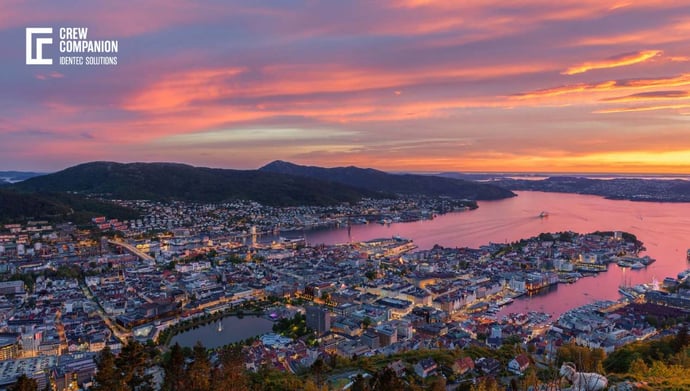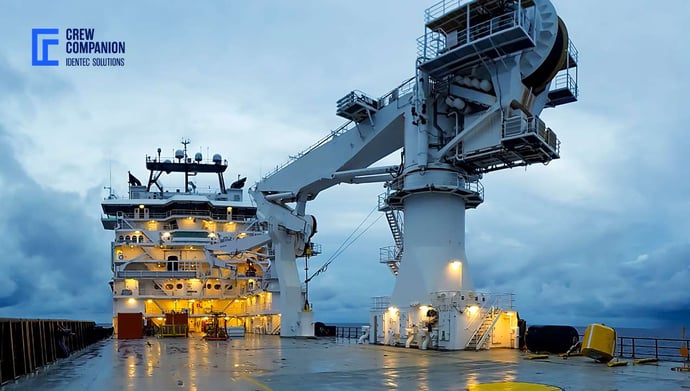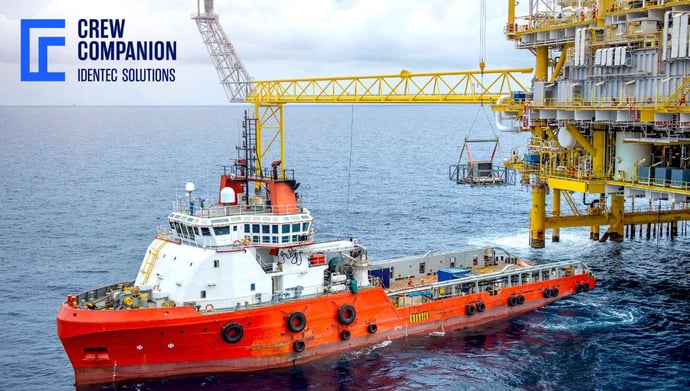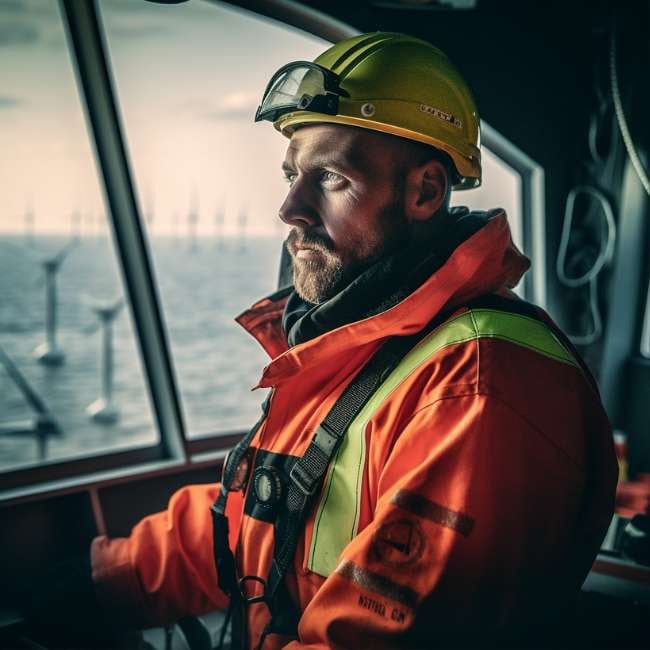Walk-to-work system: Digitalize offshore operations
| Written by Michal Wozniakowski-Zehenter
Offshore work is changing big time! Thanks to the magic mix of Walk-to-Work gangways and those nifty Service Operation Vessels, we're seeing a whole new digital wave hit the industry. It's not just about fancy tech. The reason for that is to make things smoother, smarter, and safer out there on the waves. The future looks bright, and digital, for offshore gigs!
Remember when getting to an offshore platform felt like an epic quest? Well, not anymore. Thanks to W2W gangways and SOVs, workers can stroll from the ship to their work site without breaking a sweat. No more long waits or playing hopscotch between boats and helicopters. It's faster, safer, and a total game-changer.
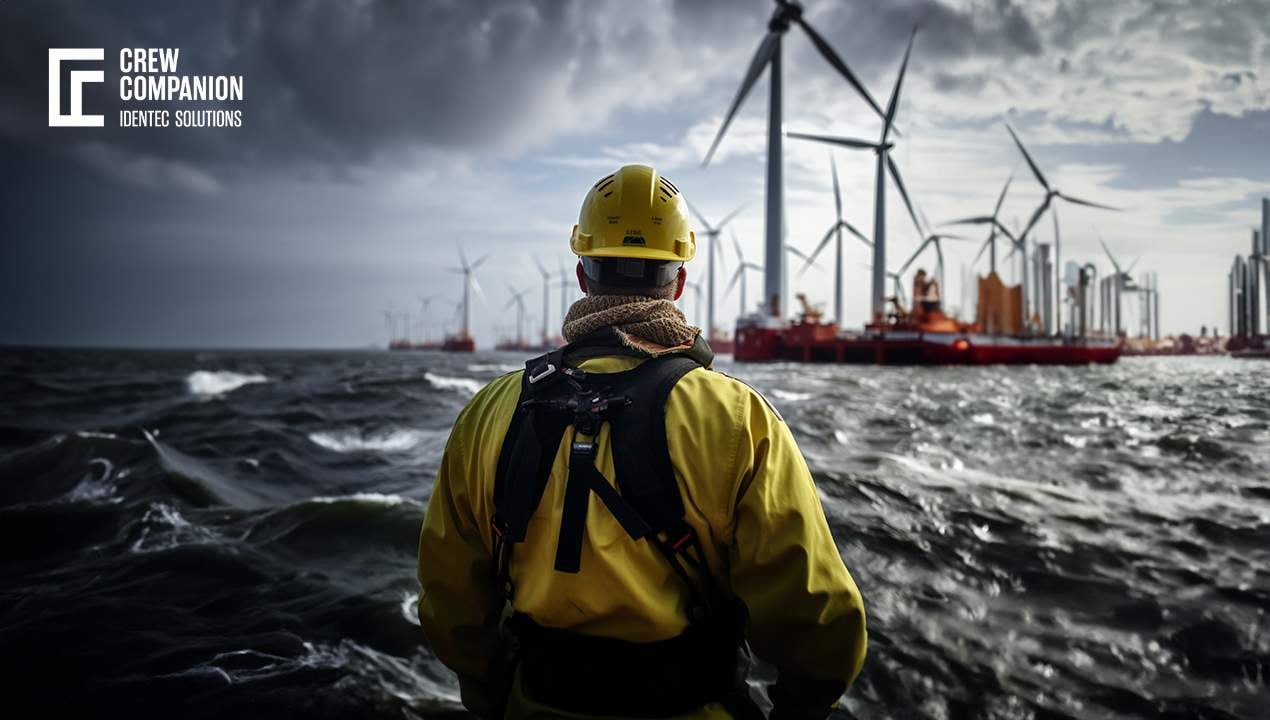
No video selected
Select a video type in the sidebar.
In the offshore scene, tech advancements are changing the game, and it's genuinely impressive. Imagine having a constant pulse on the health of your offshore setups, with real-time insights flooding in. Maintenance isn't just about reacting; it's about staying ahead, and catching those small issues before they become big problems.
Safety? That's been ramped up a notch, too. Thanks to nifty sensors and monitoring tools, we're spotting and squashing risks quicker than ever. And let's not forget the game changers: W2W gangways and SOVs. These gems, coupled with digital wizardry, are making offshore work smoother (read more about creating a mustering report automatically), safer, and way more efficient.
Walk-to-Work system: Why is it so unique?
Walk-to-Work gangways are not your ordinary walkways; they are true engineering wonders designed to conquer the unpredictable forces of the sea. These gangways utilize motion-adapting technology, constantly adapting to the ship's shifts to keep a steady link with the offshore station.
Crafted from top-quality steel or carbon fibre, the gangway's main structure offers the perfect combination of flexibility and strength. Strategically positioned motion-detecting mechanisms throughout the gangway instantly respond to any motion, ensuring unwavering stability. Safety is of the utmost importance, which is why W2W gangways are equipped with anti-slip surfaces and automated barriers to protect personnel during transfers.
Compared to conventional ships, SOVs are designed with extended offshore tasks in mind. These multi-functional vessels are not only providing transportation but also living quarters for the crew onboard. A sophisticated system incorporating sensors, propellers, and thrusters keeps the SOV steady and stationary relative to the offshore platform, even in the fiercest sea conditions. Modern SOVs can be likened to floating hotels with comfortable sleeping quarters, recreational areas, and even medical facilities. With their extended missions in mind, SOVs often include workshops where equipment can be repaired or maintained without the need to return to shore. Some even boast helipads for alternative transfers or emergency evacuations.
While both Walk-to-Work gangways and SOVs are impressive individually, their combined operation truly revolutionizes offshore transfers. By harnessing the gangways' motion compensation abilities and the SOVs' dynamic positioning system, transfers can now take place in conditions previously deemed hazardous. Having living quarters on SOVs means crews can extend their offshore stays, cutting down on back-and-forth trips. Combining W2W with SOVs not only lessens the hazards of moving personnel but also sets a new standard for safety in offshore tasks.
THE POWER OF DIGITAL INTEGRATION
Equipping a Walk-to-Work gangway with cutting-edge sensors and IoT tech allows for real-time tracking of the gangway's status, its structural health, and the surrounding environment. These sensors can gauge elements like weight balance, movement steadiness, and even nearby potential threats. Moreover, they can identify who's currently on the vessel and track who disembarked to work on wind turbines or oil rigs. Armed with this comprehensive data, operators can make on-the-spot, knowledgeable choices, optimizing the safety and effectiveness of W2W transitions.
In the ever-evolving maritime industry, integrating cutting-edge AI algorithms with dynamic positioning systems takes W2W transfers to a whole new level of precision and security. Using AI's knack for processing heaps of information from sensors and weather predictions, these setups can hold a ship steady and foresee and offset the impacts of tough ocean conditions. This foresight allows crews to see potential issues coming and handle them proactively, making transfers smoother and more secure.
As we move into a more digital era, the ability to refine maintenance methods stands out. Using sophisticated data analysis and smart tech algorithms, we can foresee how equipment, like the W2W gangway, will hold up over time. Sensors strategically placed throughout the gangway can detect anomalies, identify wear patterns, and uncover operational inefficiencies. This wealth of data allows for proactive maintenance scheduling, minimizing downtime, and ensuring uninterrupted operational continuity.
Embracing the immersive technologies of Virtual Reality (VR) and Augmented Reality (AR), crews can now undergo comprehensive training on W2W operations in a highly realistic and interactive digital environment. These digital training modules provide a simulated offshore setting, enabling personnel to familiarize themselves with the intricacies of W2W transfers even before stepping foot on an SOV. Using AI's knack for processing heaps of information from sensors and weather predictions, these setups can hold a ship steady and foresee and offset the impacts of tough ocean conditions.
Walk-to-Work system improving even more
Using data insights, offshore leaders are reshaping how they run things, pulling from the vast information they gather from SOVs and Walk-to-Work gangways. This info-focused method lets them make smart choices, boosting both work speed and output. Take transfer windows as an example: by fine-tuning them, the process of moving crew and gear between vessels becomes seamless, cutting down idle time and pumping up the action.
Data insights also give a fresh perspective on organizing crew shifts. By diving deep into tasks load, expertise, and even rest levels, we can map out the best crew timetables that keep everyone productive and in good spirits. This not only boosts work output but also crafts a safer workspace.
When digital tools are added to the mix with W2W and SOVs, safety measures are constantly tweaked. If things go sideways, these tech systems quickly show the best way out, helping folks evacuate from offshore locations swiftly and safely. This boosts worker safety, cuts down on possible issues, and guarantees a fast action plan during emergencies.
Lastly, pulling insights from data can also spotlight how nature affects work offshore. Gathering details about the weather, the mood of the sea, and other key factors means operations can be adjusted to stay safe and efficient. This forward-thinking stance ensures decisions are made on solid ground, strategies are always in tune, and mother nature's mood swings don't catch anyone off guard.

BRIGHT FUTURE AHEAD
Picture a scenario where these autonomous SOVs work in perfect harmony with the centralized digital hub, constantly monitored and controlled from a place, even far away. This digital command centre becomes the heart of operations, gathering live data and insights. This allows those in charge to make quick, knowledge-driven choices on the spot. The integration of artificial intelligence and machine learning algorithms would optimize operations, ensuring maximum efficiency and minimal downtime.
Furthermore, the potential benefits of this digital revolution extend beyond just efficiency gains. With autonomous SOVs and W2W gangways, the safety of offshore operations would be significantly enhanced. Removing the need for human intervention during docking procedures would greatly reduce the risk of accidents and injuries.
This technological leap goes beyond ensuring worker safety; it's also about shielding our environment and cutting down on potential environmental hiccups, such as oil spills. With these combined forces of digital insights, self-operating systems, and a central hub for control, the future looks bright.
THE EVOLVING ROLE OF DATA ANALYTICS
The evolution goes beyond real-time monitoring—it’s about harnessing comprehensive insights to drive continuous innovation and improvement across offshore platforms. Predictive analytics revolutionises the offshore landscape by turning reactive responses into proactive strategies. Through constant data collection from sensors embedded within W2W gangways and SOVs, algorithms can predict potential equipment failures or inefficiencies before they impact operations. This foresight empowers operators to schedule maintenance at the most opportune times, significantly reducing downtime and extending the lifespan of crucial equipment. The ability to anticipate mechanical or environmental disruptions shifts the offshore paradigm from reactive to predictive, ensuring smoother, uninterrupted operations. Integrating artificial intelligence (AI) and machine learning (ML) amplifies the impact of data-driven decisions. AI algorithms synthesise vast amounts of data from weather forecasts, wave models, and gangway performance metrics to provide a comprehensive risk assessment. This empowers offshore leaders to make informed, data-backed decisions in real time, such as determining optimal transfer windows or adjusting SOV positioning to mitigate potential hazards. The result? A significant boost in operational safety and efficiency.
Data analytics also plays a pivotal role in optimising workforce management. By analysing crew performance data, workload distribution, and shift patterns, offshore managers can craft schedules that enhance productivity and ensure well-rested teams. This fine-tuning prevents fatigue-related incidents and promotes a safer working environment, fostering better morale and reducing turnover rates. In an era where precision and adaptability are paramount, leveraging data analytics in W2W and SOV operations isn’t just an advantage—it’s a necessity. With data at the core of offshore strategies, the industry is poised for sustained growth, safety, and innovation, steering toward an ever-brighter future.
FAQS
What is an SOV?
SOVs are purpose-built vessels designed to upkeep tasks in offshore renewable energy space. They boost offshore tasks with capabilities like stable positioning tech, onboard walkways for easy access, prolonged operational stints, on-deck workshops and storage areas, protective measures, and eco-friendly adaptations.
How big are Walk-to-Work gangways?
Walk-to-Work gangways come in various lengths, ranging from a few meters to much longer systems that extend up to 50 meters or more. This extended length is very important for SOVs to maintain a safe distance from offshore structures while still facilitating personnel transfer. The width of these gangways is carefully designed to accommodate safe two-way foot traffic, typically ranging from 1 to 3 meters, depending on the specific design and intended capacity. They are built to support the weight of personnel and their carrying equipment. Some gangways can handle loads ranging from a few hundred kilograms to several tons, ensuring efficient and seamless operations. Their telescopic systems set advanced Walk-to-Work solutions apart, allowing for adjustable lengths based on the distance from the offshore structure. Furthermore, these gangways are equipped with motion-compensation technologies, actively adjusting their position in real time to account for the vessel's movement caused by waves.
TAKEAWAY
Blending Walk-to-Work platforms with specialized offshore vessels and the latest tech innovations is giving the offshore world a much-needed makeover. As these enhanced tools become an integral part of our daily grind, offshore spots are seeing some serious leaps in how things get done - faster, better, and safer. Tossing smart tech into the mix, the next chapter of offshore work looks super promising.It's more than just jumping on the digital bandwagon. It's about opening doors to fresh, inventive ways of working. We're on the brink of a smarter, niftier, and brighter future in the offshore world.
Dive deeper into one of our core topics: Personnel on board
Sources:
(2) https://www.ampelmann.nl/projects/ready-to-use-walk-to-work-vessel
Note: This article was updated on the 5th of November 2024

Author
Michal Wozniakowski-Zehenter, Marketing Manager
Michal Wozniakowski-Zehenter is an experienced marketing and project management professional. He spent most of his career on projects with a strong focus on digital marketing and event management. He is a very active voice representing offshore and mining industries through social media channels. Michal writes mainly about offshore oil and gas, renewable energy, mining and tunnelling. Compiling and sharing the knowledge within industries is one of his goals.

